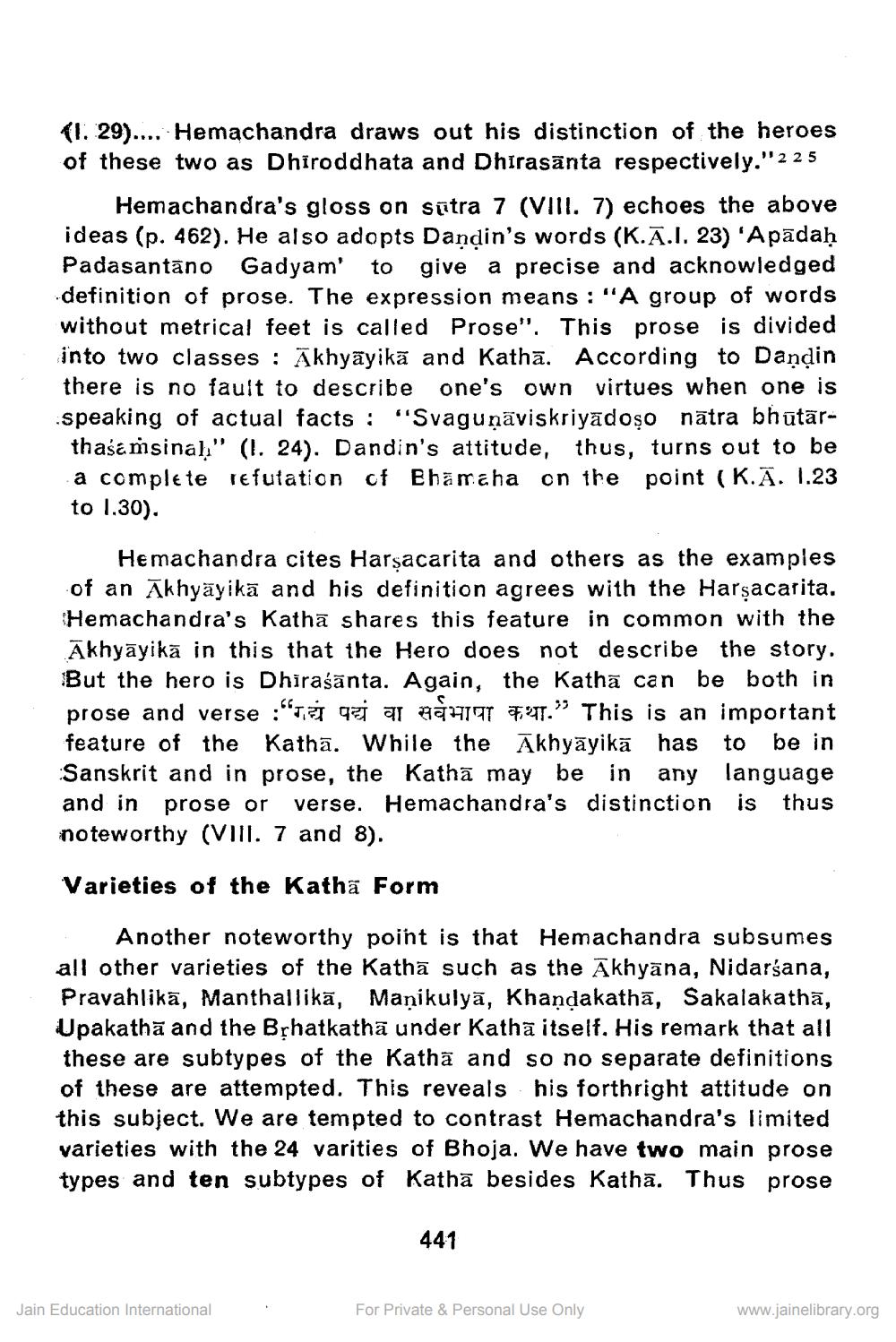________________
(1. 29).... Hemachandra draws out his distinction of the heroes of these two as Dhiroddhata and Dhirasanta respectively."2 2 5
Hemachandra's gloss on sätra 7 (VIII. 7) echoes the above ideas (p. 462). He also adopts Dandin's words (K.Ā.I. 23) 'Apādaḥ Padasantāno Gadyam' to give a precise and acknowledged definition of prose. The expression means : "A group of words without metrical feet is called Prose". This prose is divided into two classes : Akhyāyikā and Kathā. According to Dandin there is no fault to describe one's own virtues when one is speaking of actual facts : "Svaguņāviskriyādoso nātra bhūtārthaśamsinal" (I. 24). Dandin's attitude, thus, turns out to be a complete refutation of Bhamaha on the point (K.A. 1.23 to 1.30).
Hemachandra cites Harşacarita and others as the examples of an Akhyāyikā and his definition agrees with the Harşacarita. Hemachandra's Kathā shares this feature in common with the Akhyāyikā in this that the Hero does not describe the story. But the hero is Dhiraśānta. Again, the Kathā can be both in prose and verse "I qej ar HIT ,24T.” This is an important feature of the Kathā. While the Akhyāyikā has to be in Sanskrit and in prose, the Kathā may be in any language and in prose or verse. Hemachandra's distinction is thus noteworthy (VIII. 7 and 8).
Varieties of the Kathā Form
Another noteworthy point is that Hemachandra subsumes all other varieties of the Kathā such as the Ākhyāna, Nidarśana, Pravahlikā, Manthallikā, Manikulyā, Khandakathā, Sakalakathā, Upakathā and the Brhatkathā under kathā itself. His remark that all these are subtypes of the Kathā and so no separate definitions of these are attempted. This reveals his forthright attitude on this subject. We are tempted to contrast Hemachandra's limited varieties with the 24 varities of Bhoja. We have two main prose types and ten subtypes of Kathā besides Kathā. Thus prose
441
Jain Education International
For Private & Personal Use Only
www.jainelibrary.org




